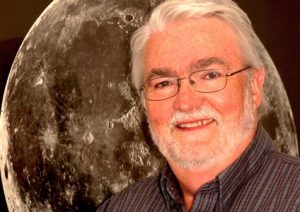

PhD, Chemical Engineering, University of Texas-Austin, 1992.Miller received his BS in Chemical Engineering from Texas A&M University in 1986, and his PhD in Chemical Engineering from the University of Texas at Austin in 1992. Miller has co-authored over 120 technical documents, holds 10 patents, and is the recipient of two R&D 100 Awards. He led and contributed directly to efforts in materials development and characterization, development of new high temperature thermochemical reactors and systems, and thermodynamic, engineering and technoeconomic analysis. He served as the principle investigator of the large multi-institution and –discipline solar thermochemical efforts for solar fuels (Sunshine to Petrol) and thermochemical energy storage (PROMOTES). Prior to joining ASU LightWorks® in 2018, he worked at Sandia National Laboratories for over 25 years where his work touched on diverse topics ranging from catalysis for a variety of reactions to desalination.

Miller (Jim) is a chemical engineer who has directed his efforts towards energy, materials, and chemical processing research.

Professor of Practice, School of Sustainability, College of Global Futures.Senior Global Futures Scientist, Julie Ann Wrigley Global Futures Laboratory.These results, too, confirmed the presence of superhot plasma on the sun. On top of that, Daw said evidence was also found from another experiment launched on sounding rockets in 20 that imaged soft X-rays from the corona. In a quiet region, such hot temperatures clearly weren't due to a large explosive solar flare, raising the possibility that the heat source for the sun's atmosphere had been found. The spectrograph spotted this extremely hot material in active regions that visibly appeared to be quiet. It was tuned into a range of wavelengths useful for spotting material at temperatures of 10 million kelvins (18 million degrees F), the temperatures that signify nanoflares. EUNIS flew on a 15-minute flight in December 2013 equipped with an instrument called a spectrograph. The first evidence of these nanoflares was presented in 2013 by Adrian Daw, a solar scientist at Goddard and principal investigator of the Turning to the Extreme Ultraviolet Normal Incidence Spectrograph, or EUNIS, sounding rocket mission. But they still needed direct evidence the nanoflares existed. Scientists zeroed in on the nanoflares as far back as 2009, after finding that coronal loops have much higher density than could predicted with the steady heating theory. Millions of them are going off every second across the Sun, and collectively they heat the corona." "Despite being tiny by solar standards, each packs the wallop of a 10-megaton hydrogen bomb. "The explosions are called nanoflares because they have one-billionth the energy of a regular flare," Klimchuk said in a statement. These individual bursts of heat can reach temperatures of some 10 million kelvins or 18 million degrees Fahrenheit, providing heat to the sun's atmosphere. Jim Klimchuk, a solar scientist at NASA's Goddard Space Flight Center in Greenbelt, Maryland, said the new evidence supports a theory that millions of nanoflares heat the sun's corona. Solar Flares in All Their Splendor 16 photos Briefing reporters at the Triennial Earth-Sun Summit meeting in Indianapolis on Tuesday, researchers said they have identified a mechanism at work that depends on intermittent bursts of explosive heat called nanoflares, contradicting an earlier theory that pointed to continuous gradual heating. Now, researchers believe they have solved the mystery. Scientists have long puzzled over why the sun's atmosphere is so much hotter - 300 times hotter - than its surface, despite it being further away from the heat source.


 0 kommentar(er)
0 kommentar(er)
